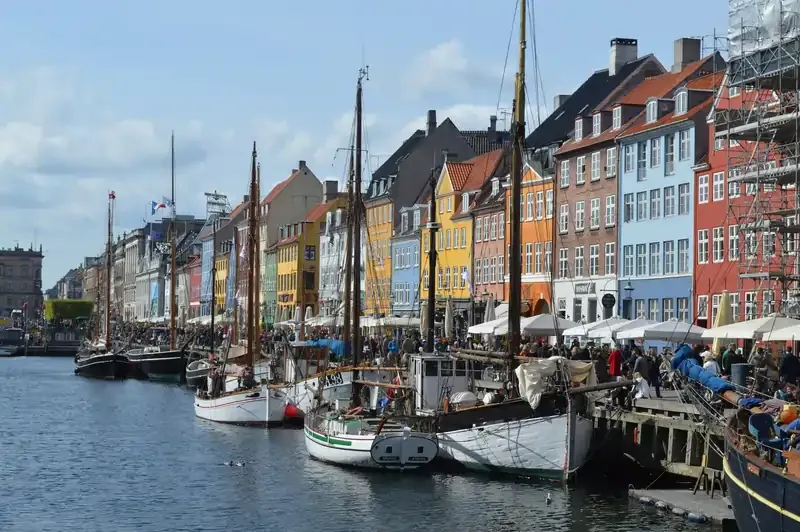travel hacks
Essential tips to help you plan your first trip to Europe
Plan your itinerary and transport, and stay connected!
Europe is a continent filled with rich history, diverse cultures, stunning landscapes, and some of the world's most iconic landmarks. It's no wonder that it's a dream destination for many travelers. If you're planning your first trip to Europe, you're in for an unforgettable experience. However, to make the most of your journey and ensure a smooth trip, it's essential to be well-prepared — and that includes getting a Europe SIM card to stay connected as you explore. In this blog post, we'll provide you with some valuable tips to make your first European adventure a memorable one.

Plan your itinerary: How many cities to visit?
Europe is vast, and trying to see everything in one trip is nearly impossible. Instead, focus on a few key cities or regions that interest you the most. It is recommended that you spend at least 3 or 4 days in each major city to give yourself a chance to know the place better. Remember to also factor in traveling time between destinations when planning your itinerary!
After you have decided on a few cities, make sure not to squeeze too many sights and attractions in that short amount of time. You don't want to be simply checking off a laundry list of must-see attractions, or to be rushing from place to place just so that you can cover as much as possible — give yourself time to properly immerse in the culture and attractions.
Although it is good to have a make a rough itinerary, it is also good to keep your itinerary and plans flexible. Really like a place? Feel free to spend more time there than you originally planned. Or if you simply can't vibe with a place, it is definitely alright to skip it entirely or cut short your time there. Remember, it is your vacation, and no one else can tell you how best to enjoy it.
Get your air tickets: Which airport to fly in to and out of?
Now that you know which cities you want to visit, you will have to decide on a route that makes sense. To save traveling time, it is recommended that you order the cities and countries based on proximity. Then, based on your planned route, you can decide which airport you want to fly in to, and which to fly out of.
Remember, you don't always have to fly in and out of the same airport. Open jaw tickets exist, where you are able to buy an air ticket into one airport, but fly out from a different airport. Open jaw tickets can help you to save on both travel time and travel costs, and gives you way more flexibility in the cities that you want to visit.

Traveling in Europe: Trains or planes?
Two of the most common methods of traveling between European countries and cities would be to either take a flight, or to utilise the EURail.
To decide if you want to take a train or a flight, your two main considerations would be travel time and travel costs.
Trains vs planes: Travel time
While the actual travel times by flight could sometimes be shorter than if you were to take a train, you should also take into account some of the additional time required if you were to travel by flight: airports are usually farther out from the city center, whereas train stations are usually right in the city center. Also keep in mind that with flights, you will typically need to arrive at the airport earlier to complete the check-in procedures (it's recommended to arrive at least 3 hours before your scheduled departure). Keeping these in mind, traveling by train could sometimes be more time-effective than traveling by flight.
Trains vs planes: Travel costs
There are many budget airlines in Europe, and it might be counter-intuitive that traveling by plane could sometimes be cheaper than traveling by train. So aside from simply comparing travel times, you might also want to check out the flight options that are available before committing to your transport option.
How much cash should you bring?
To determine how much cash you need, do some research on whether the cities that you will be traveling to still mostly rely on cash payments, or if international cards are commonly accepted. In major cities and major stores, you shouldn't really have to worry too much about cards not being accepted. However, if you are planning to visit cities that are smaller, or if you will be visiting local markets, then you should make sure to have sufficient cash.
Set a rough budget for your meals and shopping, and you should be able to have an estimate of how much cash you might need. As a guideline, we will typically budget about 150EUR per day — but keep in mind your spending habits when setting this budget.
Most European cities accept Euros (EUR / €). There are some cities/countries that also have their local currencies, but they often also accept EUR. Check the different currencies that are used in the cities that you plan to visit, as well as the exchange rates to help you decide how much EUR you want to bring, or if you want to use their local currencies instead.
It is also advised to bring along a card that allows for international withdrawal, in case you need additional cash.
Read up and be aware
To prepare for your trip to Europe, be sure to read up on some of the cultural norms that you should take note of in the various destinations. Aside from the cultural norms, it is also advised to read up on some common tricks and traps that pickpockets may use. Read up also on some of the common scams that take place in the various cities.
Being aware of these common scams and tricks would be useful in identifying one when you are traveling. Remember to always be on a look out and keep your valuables safe and close with you as you travel — especially when you are exploring the popular tourists sites.

Stay connected with a single eSIM
As you travel through Europe, staying connected is essential, whether to stay in touch with your loved ones at home, or to access maps and other apps that you might need during your travels.
There are a few options to helping you stay connected, including getting a local SIM for each country that you travel to, or to activate international roaming. However, getting a local SIM for each country would mean you would have to manage multiple SIM cards and it could get quite cumbersome having to switch out your SIM cards. On the other hand, international roaming could result in rather high costs.
A better option to staying connected would be to get a travel eSIM. eSIMs are embedded SIMs, and they work just like a physical SIM, except you don't have to physically change out the SIM card. It's embedded directly into your device, providing you with more flexibility and convenience when it comes to managing your mobile connectivity.
Many providers of travel eSIM, including Nomad, provide eSIM plans for many countries globally. There are also regional eSIMs, which would allow you to seamlessly stay connected with just a single eSIM as you explore various cities within Europe. With regional eSIMs, you just need to install and activate the eSIM profile once, and it will hook on to the correct network as you travel between countries.
Can you purchase your eSIM online?
Yes, you definitely can. You don't have to wait till you arrive at your destination or visit a physical store to purchase an eSIM.
You can purchase a Nomad Europe eSIM online at the Nomad Web Store or on the Android or iOS app. After you have successfully purchased the eSIM, you will receive an email consisting installation and activation instructions. Installing your eSIM requires you to have a stable internet connection, so it is recommended to purchase and install your eSIM while you are still at home with a stable internet. Installing your eSIM doesn't mean that it is automatically activated, so you don't have to worry about the installation of the eSIM resulting in an early start to the countdown of your eSIM validity.
Get a Nomad Europe eSIM for your trip to Europe
Nomad has some of the best eSIMs for Europe. Besides offering eSIMs for over 45 countries in Europe at near-local prices, Nomad also has a regional plan suitable for travelers planning to visit multiple countries. Nomad's Europe regional plan covers up to 35 different countries in Europe, with competitive prices from as low as $1.25/GB. The plans vary in data sizes and duration, and you will be able to find one that fits your travel plans!
In the event where you run out of data, you can also easily purchase an add-on before your plan expires. Purchasing an add-on will add to the data allowance of your existing eSIM, and you wouldn't need to get a new eSIM!